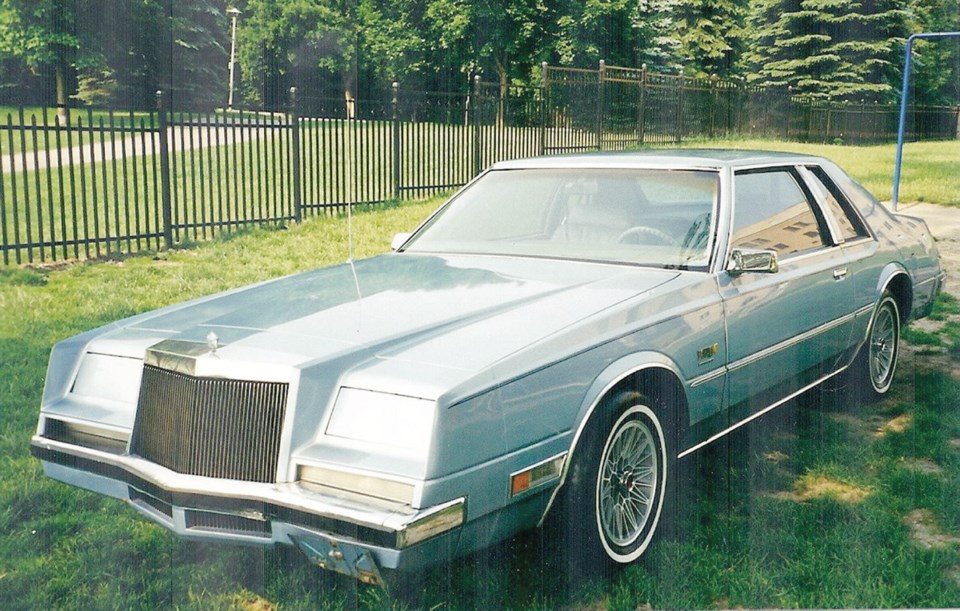Over much of the Chrysler Corp.’s history, the Imperial name represented its finest model, and from 1955 to 1970 it was even a separate Imperial (not Chrysler) brand. From the straight-eight powered classics of the 1930s to the gigantic Imperials of the ’50s, ’60s and ’70s, Imperials were special Chryslers.
But the Chrysler Imperial that arrived for the 1981 model year was driven by circumstances that dictated a major change from big Imperials of the past. The end of the 1970s found the corporation in dire financial straits due to some out-of-step models, two oil crises and heavy expenditures to meet fuel economy and emissions requirements.
Chrysler badly needed a corporate rejuvenation. The new front-wheel-drive K-cars (Dodge Aries and Plymouth Reliant) were just arriving, but it was not yet known whether they would be corporate saviours. Bankruptcy was a distinct possibility.
The new Imperial was part of Chrysler’s quest to return to prosperity and project an upscale corporate image. In view of the economic circumstances, it’s not surprising that it was based on an existing platform. After all, Cadillac had used the Chevrolet Nova, albeit heavily camouflaged, as the base for its smaller and successful 1976 Seville.
Chrysler decided to base the two-door Imperial on the compact Dodge Aspen/Plymouth Volare platform. The Imperial had the same 2,863-millimetre wheelbase and transverse torsion-bar front suspension. The solid rear axle was still suspended on leaf springs.
It was 5,428 mm long, not small, but a far cry from the 5,918-mm length of the giant 1975 Imperial on a hefty 3,150-mm wheelbase.
Under the hood was the corporate 5.2-litre overhead-valve V-8, now with electronic throttle-body fuel injection.
Fuel injection was a feature shared only with Cadillac on gasoline-engined American cars, although Cadillac’s was the superior port injection. The Imperial’s modest 140 horsepower drove the rear wheels through Chrysler’s three-speed TorqueFlite automatic transmission.
Since the 1,814-kilogram Imperial was geared for economy with a 2.24:1 final drive, performance was modest. Car and Driver recorded zero to 97 km/h in 13.0 seconds and a top speed of 166 km/h.
If the Imperial’s mechanicals, except the fuel injection, were pretty much from the corporate parts bin, the styling was quite different. The most unusual feature was a bustle-back trunk somewhat reminiscent of that found on 1950s Rolls-Royce coachwork by English firms such as Hooper, and Freestone & Webb. On the Imperial, however, it emerged with a kind of tacked-on appearance. Cadillac used a similar theme in its second generation 1980 Seville.
The sides of the Imperial were drawn in tightly and the body had an overall angular, sharp-edged motif. A handsome vertical bar grille was flanked by disappearing headlamps that gave the car, especially in dark colours, an almost sinister look.
In keeping with the Imperial name, the car was sumptuously appointed, including all power conveniences. It was upholstered in Mark Cross leather or “Kimberley Velvet,” a densely woven material. The only option was a power sunroof.
Every Imperial built at Chrysler’s sole-source Windsor, Ontario plant was given extra inspections. Then to confirm that everything was functioning perfectly, it was taken on an 8.8-kilometre test drive over a variety of roads.
To ensure exclusivity, Chrysler announced that only 25,000 1981 Imperials would be built. They needn’t have worried about diluting the cachet. As it turned out, they would have been happy to build that many, rather than the 7,225 they did sell.
The 1981 Imperial got a lukewarm reception. Although attractive enough, and offering the technical novelty of fuel injection, the public apparently no longer saw struggling Chrysler as a luxury carmaker.
Chrysler chairman Lee Iacocca, when he was not petitioning the U.S. government for loan guarantees, persuaded his friend Frank Sinatra to promote the Imperial. So they offered a special FS option dressed up with special paint and trim, and included a collection of cassette tapes of Sinatra’s greatest hits in a Mark Cross case.
Few changes were made for 1982, and by year’s end Imperial sales were a dismal 2,329. The writing was clearly on the wall for the Imperial. It went into the 1983 model year, but Chrysler discontinued it after only 1,427 of the 1983 models were built.
The Imperial was a victim of not only Chrysler’s troubles, but also, no doubt, of the severe economic recession of the early 1980s. Besides that, it was old rear-wheel drive technology in an industry turning to front-wheel drive.
Although only 10,981 1981 to 1983 Imperials were produced, this may rebound in its favour in the future; its scarcity could make it a collectible.
